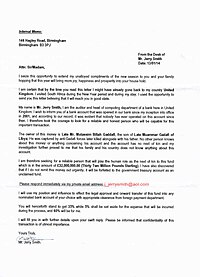
Photo from wikipedia
BACKGROUND Simpler alternatives to traditional advance directives that are easy to understand and available in multiple formats and can be initiated by patients and families will help facilitate advance care… Click to show full abstract
BACKGROUND Simpler alternatives to traditional advance directives that are easy to understand and available in multiple formats and can be initiated by patients and families will help facilitate advance care planning. The goal of this study was to compare the acceptability of the letter advance directive (LAD) to the traditional advance directive (TAD) of the state of California. DESIGN, SETTING, PARTICIPANTS, AND MEASUREMENTS A web-based, randomized controlled trial was conducted, in which the participants were randomized to one of two types of advance directives (ADs): the LAD (intervention) or the TAD (control). Primary outcomes were participant ratings of the ease, value, and their level of comfort in the AD document they completed. RESULTS A total of 400 participants completed the study, with 216 randomized to the LAD and 184 to the TAD by a computerized algorithm. Overall, participants preferred the LAD to the TAD (success rate difference [SRD] = 0.46, 95th percentile confidence interval [CI]: 0.36-0.56, p < 0.001). The participants felt that, compared to the TAD, the LAD was easier to read and understand (SRD = 0.56, CI: 0.47-0.65, p < 0.001); better reflected what matters most to them (SRD = 0.39, CI: 0.29-0.48, p < 0.001); helped stimulate their thinking about the types of treatments they wanted at the end of life (SRD = 0.32, CI: 0.23-0.42, p < 0.001); allowed them to describe how they made medical decisions in their family (SRD = 0.31, CI: 0.21-0.40, p < 0.001); and could help their doctor(s) (SRD = 0.24, CI: 0.13-0.34, p < 0.001) and their families (SRD = 0.19, CI: 0.08-0.28, p < 0.001) understand their end-of-life treatment preferences. CONCLUSIONS Patients reported the letter advance directive to be a better alternative to the traditional advance directive form.
Journal Title: Journal of palliative medicine
Year Published: 2017
Link to full text (if available)
Share on Social Media: Sign Up to like & get
recommendations!